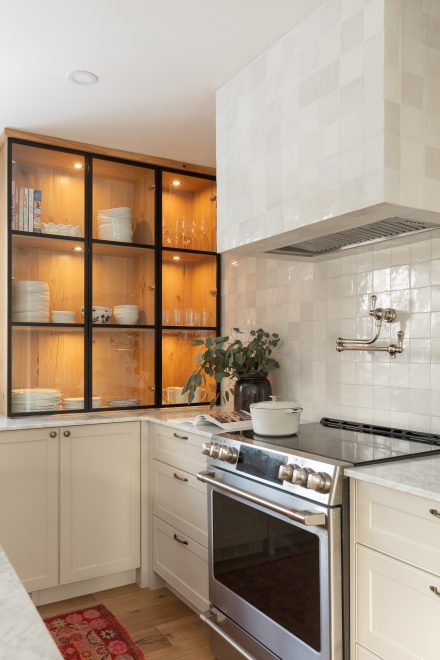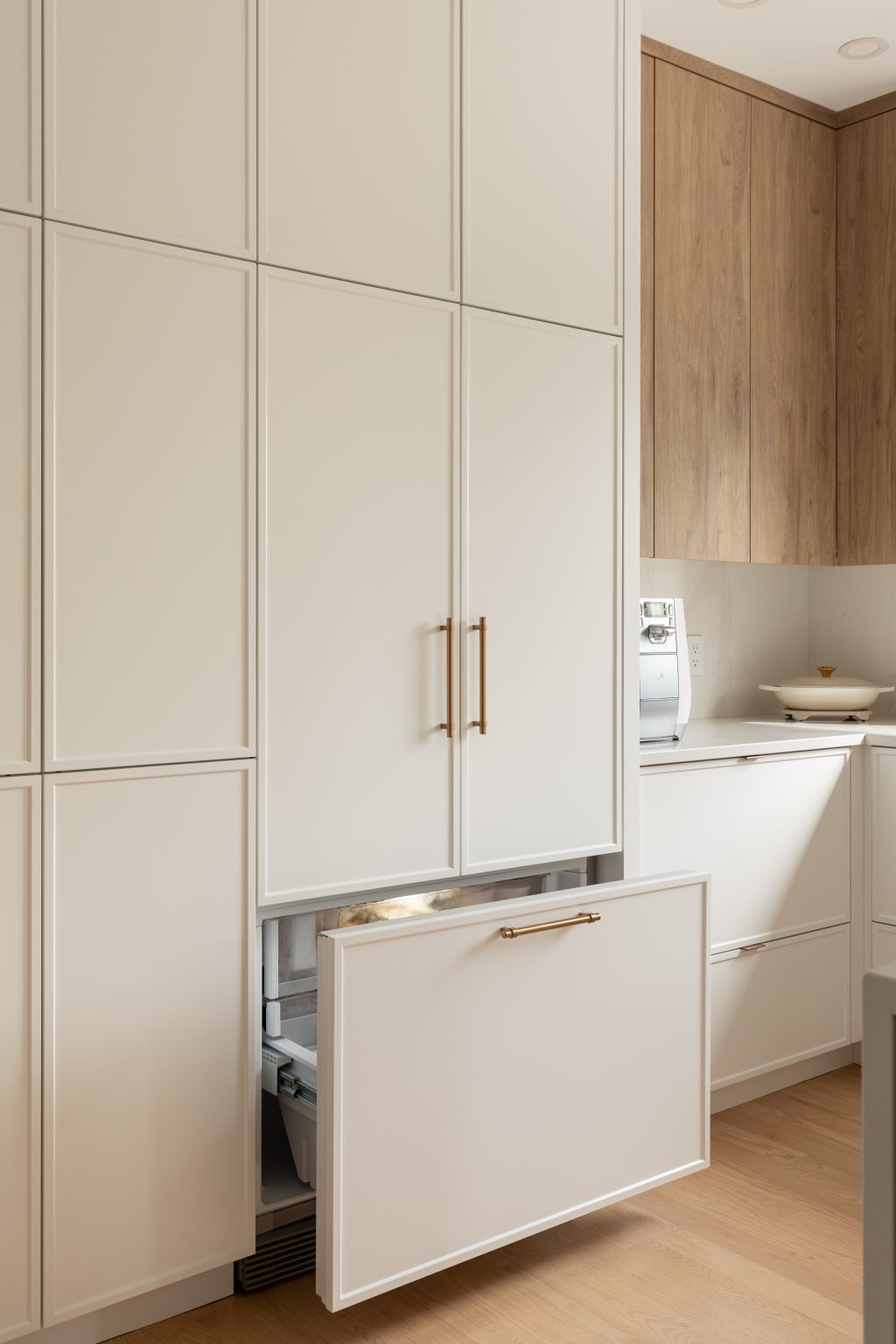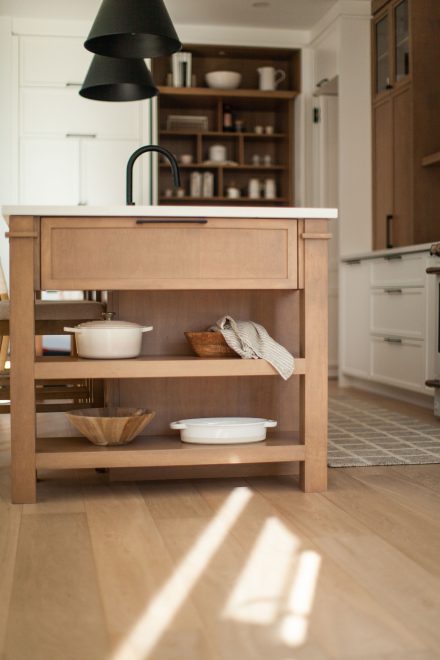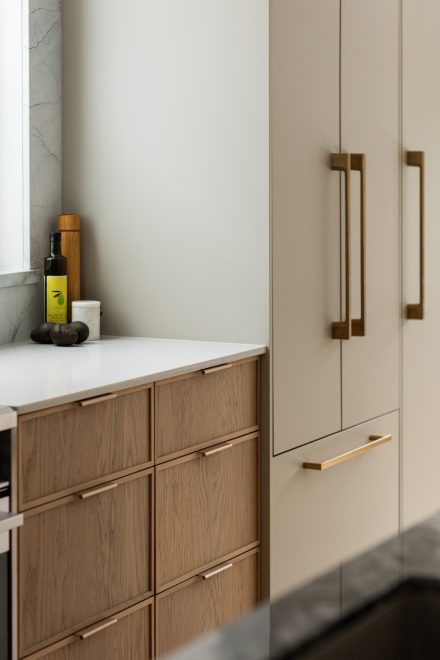
Hello, it’s a great day to start a project.
Who doesn’t like clean kitchen cabinets at all times ? The kitchen is a space where spills and messes are inevitable, but that doesn’t mean your cabinets have to suffer. To help you maintain a clean and inviting kitchen, we’ve compiled a helpful guide filled with tips and secrets. Discover how to prevent damage and keep your cabinets sparkling with our expert advice.

Investing in cabinets made from high-quality materials, such as Ateliers Jacob cabinets, ensures their durability and resistance against stubborn stains. However, regular maintenance is still crucial for their longevity. By consistently keeping your cabinets clean, you can minimize the need for extensive spring cleaning or deep scrubbing sessions. This simple habit will save you time and effort in the long run while ensuring your cabinets always look their best.
As part of your daily or weekly routine, remember to:

In your kitchen, certain areas are more susceptible to accumulating dirt, grease, bacteria, and fingerprints. By identifying these spots, you can proactively clean them regularly, preventing dirt from becoming embedded over time.
Pay special attention to the cabinets surrounding the dishwasher, as they often get splashed during use. The person responsible for emptying the dishwasher should get into the habit of cleaning these cabinets simultaneously. It only takes a few seconds, and even a child can do it!
When it comes to maintaining your kitchen cabinets, using cleaners that are specifically suited to your usage is key. Often, we tend to rely on products that are stronger than necessary, inadvertently causing unnecessary wear and tear.

When it comes to cleaning your kitchen cabinets, the tried-and-true method of using soapy water still reigns supreme. Just mix a few drops of dishwashing soap with lukewarm water, and use a clean, non-abrasive, well wrung-out sponge on your furniture and cabinets. Gently scrub your cabinets and furniture, then use a dry cloth to wipe away any lingering moisture, especially if your cabinets are made of wood or MDF to prevent water damage. Soapy water works wonders for most cabinet materials, including wood, polyester, melamine, thermoplastic, and laminate. This solution is both gentle on your cabinets and effective at tackling even the most stubborn stains or greasy residue.
For your laminate furniture and cabinets, an occasional cleaning with a vinegar-based solution can work wonders. Simply mix equal parts of vinegar and lukewarm water in a large container. Then, use a soft cloth or sponge to gently clean the surface. Rinse quickly to prevent your homemade cleaner from drying, and wipe dry with a clean cloth.
Keep in mind that vinegar has a distinctive smell that may bother some individuals if it becomes too strong. However, it’s important to avoid using vinegar on wood surfaces to prevent any potential damage.
When it comes to countertops, particularly those made of natural stone like quartz or granite, exercise caution with vinegar. The acidity of vinegar can dull the shine of these surfaces, so it’s best to avoid using vinegar on them.

When faced with stubborn grease stains and persistent dust, rubbing alcohol can be your go-to solution. Begin by pouring a few drops of rubbing alcohol onto a soft, damp cloth. Gently rub the greasy or dusty surface of your cabinets, ensuring thorough coverage. Follow up by using a second damp cloth to go over the area once more, and then dry it thoroughly. You’ll be amazed at how easily grease and dust vanish with this simple technique!
For an alternative approach to tackling grease on your surfaces, combine warm water with a dose of liquid fabric softener. Grab some paper towels and gently rub the stains away using this solution. Not only is it less corrosive than household alcohol, but it also leaves a delightful scent of fresh laundry throughout your kitchen or bathroom. The added bonus? It helps repel dust from your surfaces, keeping them cleaner for longer!

When faced with stubborn stains, baking soda comes to the rescue as a potent descaler! However, keep in mind that this cleaner is abrasive, so handle it with caution and avoid using it on wooden cabinets to prevent any potential damage. Create a paste by mixing baking soda with water and apply it gently to the encrusted surface. Due to its powerful nature, it’s best to reserve this solution for occasional use.
For thorough disinfection of the surfaces in your cabinets that come into contact with food, a homemade antibacterial kitchen cleaner can be made by adding a tablespoon of bleach to a liter of hot water. However, exercise caution when using this solution on natural stone countertops to avoid any potential damage.
If you have any doubts before using a cleaning, disinfecting, or degreasing product on your cabinets, test it on a small, inconspicuous surface to ensure it doesn’t leave any noticeable marks.
Remember to clean the interior of your cabinets as well, including the glass doors. Finally, don’t overlook the importance of regularly cleaning the door handles, which are touched by everyone throughout the day. This attention to detail will help maintain the overall cleanliness and design of your kitchen, while also keeping germs at bay in even the tiniest corners.